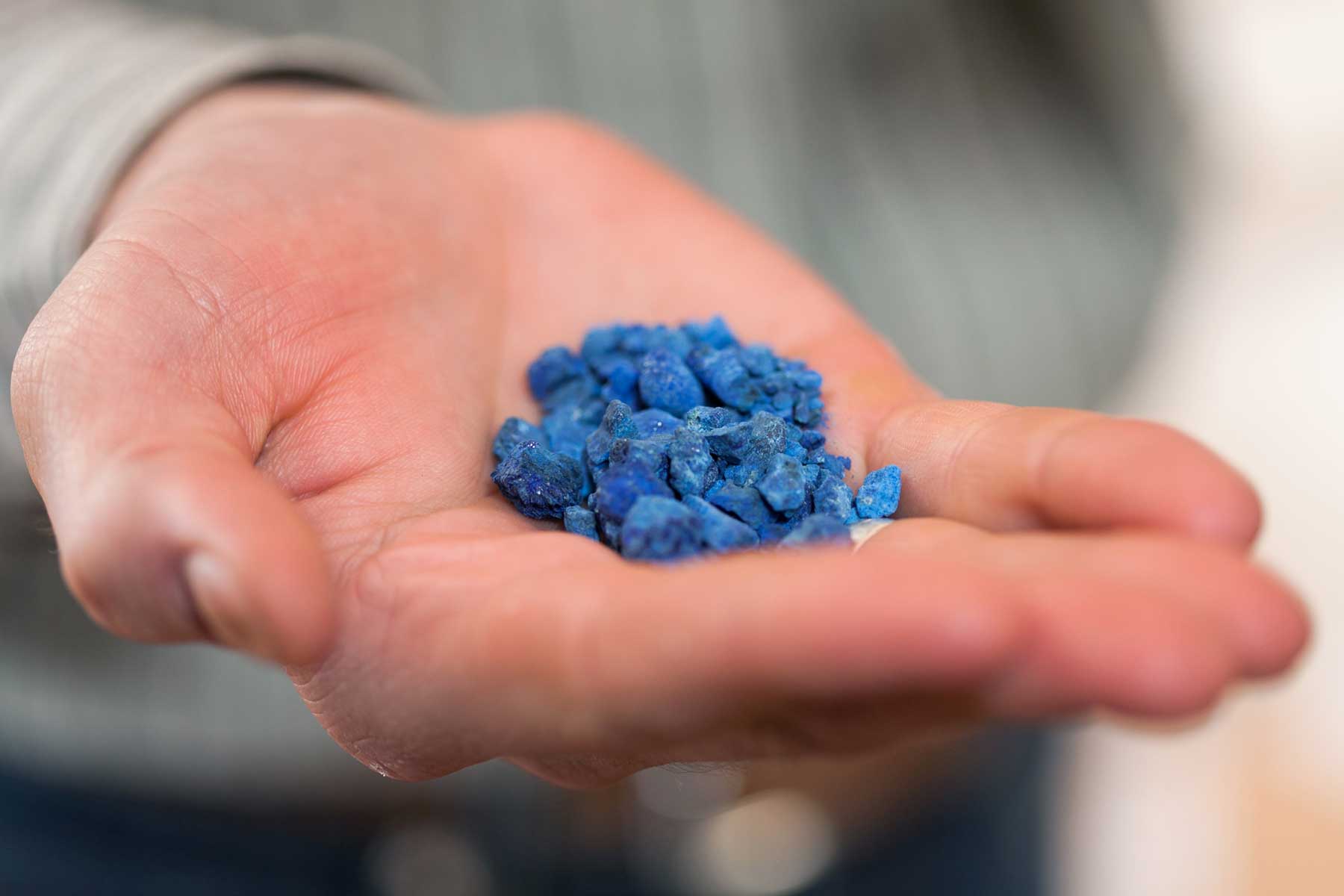
This pigment is ground, washed, and sieved but has not been processed in any other way.
You can also find other ingredients that you may need to replicate Cennini’s process of purifying lapis lazuli in our shop. Several translations of the method used by Cennini have been made, with a new one to be published soon. Thompson (Thompson, 1954) gives a thorough description of the process:
“When you have this powder all ready, get six ounces of pine rosin [colophony—Editor] from the druggists, three ounces of gum mastic, and three ounces of new wax [beeswax—Editor], for each pound of lapis lazuli; put all these things into a new pipkin, and melt them up together. Then take a white linen cloth, and strain these things into a glazed washbasin. Then take a pound of the lapis lazuli powder, and mix it all up thoroughly, and make a plastic of it, all incorporated together. And have some linseed oil, and always keep your hands well greased with this oil, so as to be able to handle the plastic. You must keep this plastic for at least three days and three nights, working it over a little every day; and bear in mind that you may keep it in the plastic for two weeks or a month, or as long as you like. When you want to extract the blue from it, adopt this method. Make two sticks out of a stout rod, neither too thick nor too thin; and let them each be a foot long; and have them well [p. 37] rounded at the top and bottom, and nicely smoothed. And then have your plastic in the glazed washbasin where you have been keeping it; and put into it about a porringerful of lye [historically, potassium hydroxide—Editor], fairly warm; and with these two sticks, one in each hand, turn over and squeeze and knead this plastic, this way and that, just as you work over bread dough with your hand, in just the same way. When you have done this until you see that the lye is saturated with blue, draw it off into a glazed porringer. Then take as much lye again, and put it on to the plastic, and work it over with these sticks as before. When the lye has turned quite blue, put it into another glazed porringer, and put as much lye again on to the plastic, and press it out again in the usual way. And when the lye is quite blue, put it into another glazed porringer. And go on doing this for several days in the same way, until the plastic will no longer color the lye; and then throw it away, for it is no longer any good. Then arrange all these porringers in front of you on a table, in series: that is, the yields, first, second, third, fourth, arranged in succession; and with your hand stir up in each one the lye with the blue which, on account of the heaviness of this blue, will have gone to the bottom; and then you will learn the yields of the blue. Weigh the question of how many grades of blue you want: whether three or four, or six, or however many you want; bearing in mind that the first yields are the best, just as the first porringer is better than the second. And so, if you have eighteen porringers of the yields, and you wish to make three grades of blue, you take six of the porringers and mix them together, and reduce it to one porringer; and that will be one grade. And in the same way with the others. But bear in mind that if you have good lapis lazuli, the blue from the first two yields will be worth eight ducats an ounce. The last two yields are worse than ashes: therefore be prudent in your observation, so as not to spoil the first blues for the poor ones. And every day drain off the lye from the porringers, until the blues are dry. When they are perfectly dry, do them up in leather, or in bladders, or in purses, according to the divisions which you have.”
Merrifield (Merrifield, 1844) describes a slightly different process from her reading of Cennini’s text:
“In preparing ultramarine for painting, it is now the practice to calcine the lapis lazzuli at a red heat, then quench in water, and grind to an impalpable powder. It is then worked into a paste composed of 100 parts lapis lazzuli, 40 resin, 20 white wax, 25 linseed oil, and 15 Burgundy pitch. After standing fifteen days, and kneading it, the ultramarine is separated by washing it with clean water heated to 150 degrees; the residue only, which yields the ultramarine ashes, is treated with a solution of soda. Ultramarine is found to consist of silica, alumina, sulphur, and soda or potash. De Piles observes, that ultramarine when calcined became more brilliant, but that the quantity was diminished, and that by refining it in this manner it became coarser in texture, and difficult to use in miniature painting,—a charge equally applicable to the modern pigment.”
References
Cennino Cennini, The Craftsman's Handbook: The Italian “Il libro dell'arte,” Daniel Varney Thompson, translator, Dover Publications, 1954, pp. 37, 38.
Cennino Cennini, A Treatise on Painting, Giuseppe Tambroni, Mary Philadelphia Merrifield, translators, Lumley, 1844, p. 131. Note that the translator in Merrifield uses parts as the measurements and replaces the two resins named by Thompson with an unidentified resin and Burgundy pitch.












